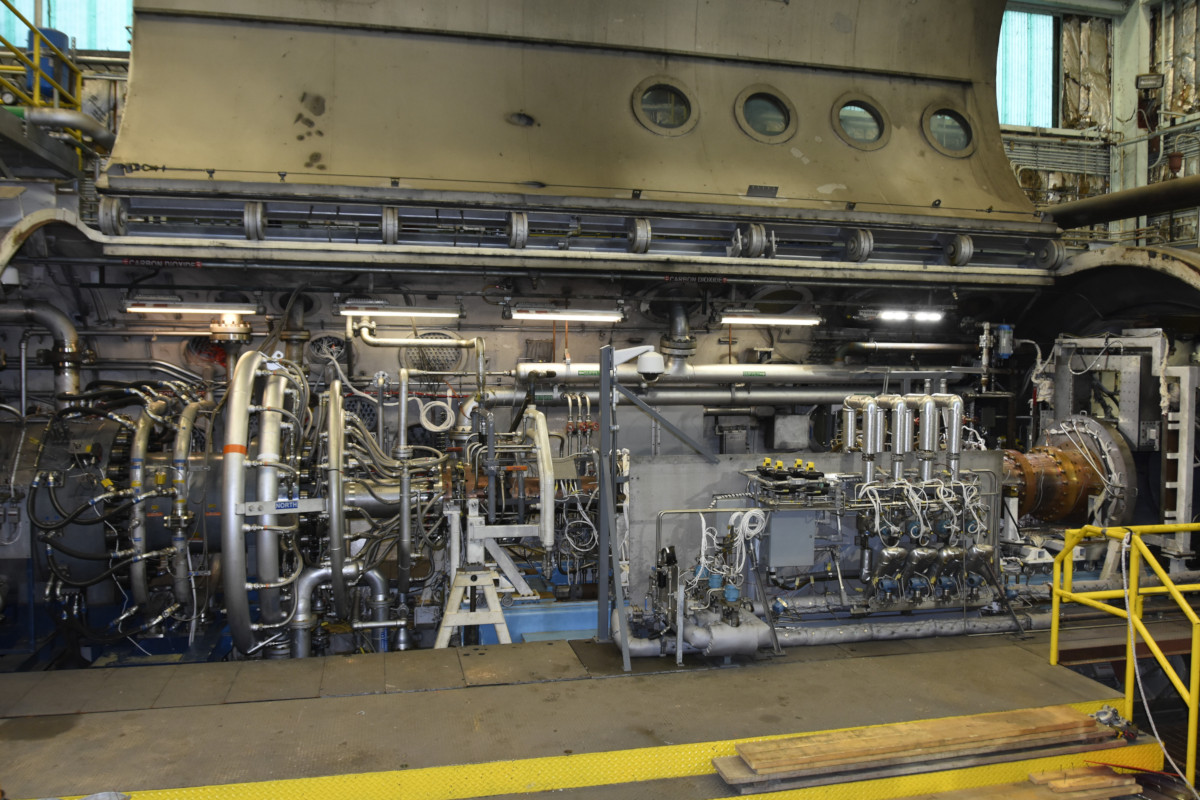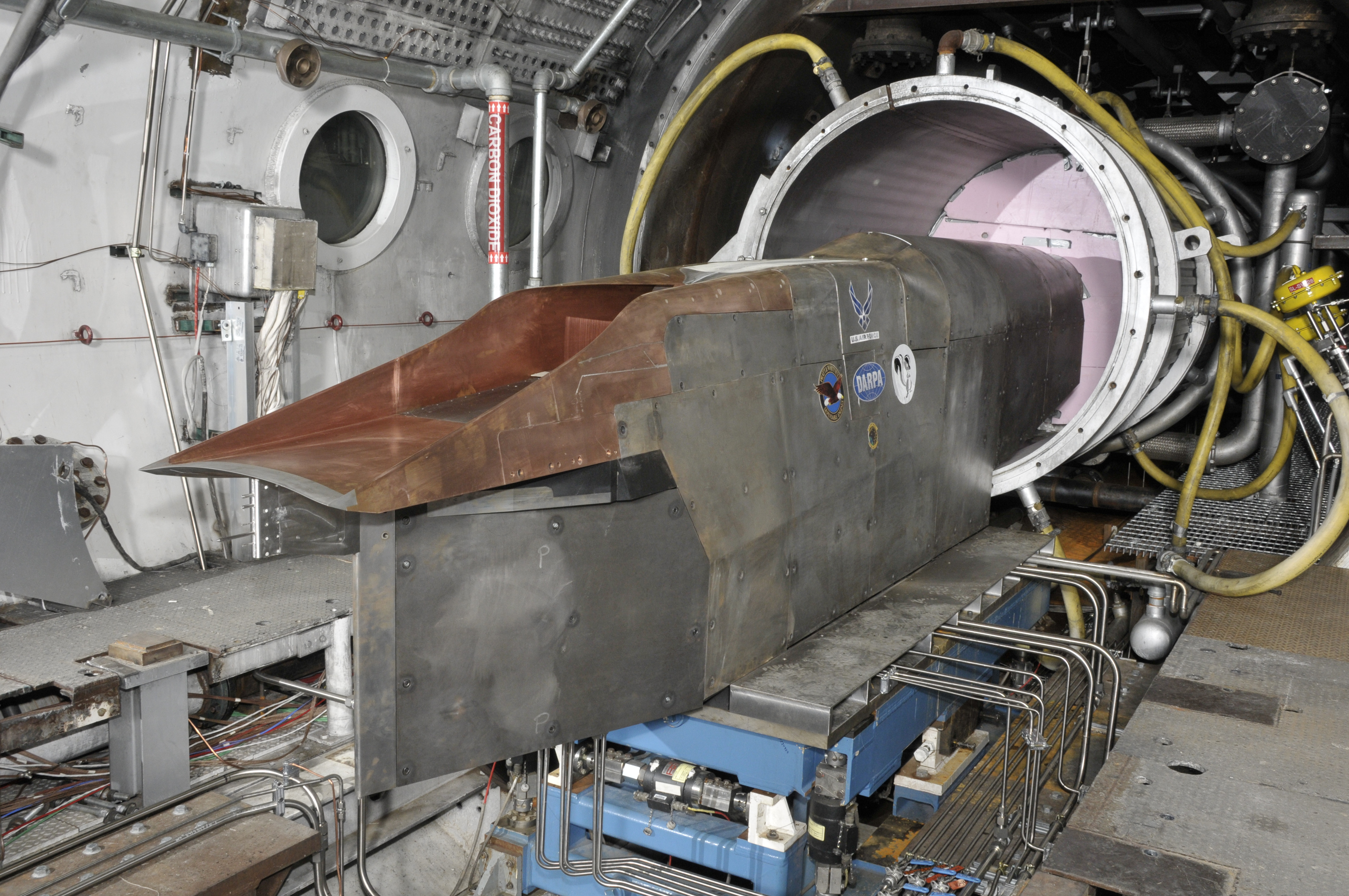The Air Force recently broke the record for the highest thrust producing air-breathing hypersonic engine the service has ever tested in its history, at least that we know about. Northrop Grumman built the scramjet engine for the Air Force Research Laboratory and its development comes amid a general renaissance in all things hypersonic across the U.S. military.
The Air Force Research Laboratory announced the achievement on Aug. 5, 2019, but did not say specifically when it had occured. AFRL and Northrop Grumman had tested the 18-foot long fighter-engine sized scramjet powerplant across a nine-month period. The engine ran for a total of 30 minutes across an unspecified number of tests, generating up to 13,000 pounds of thrust under conditions the engine would experience at speeds of above Mach 4. The testing occured at the Arnold Engineering Development Complex’s (AEDC) Aerodynamic and Propulsion Test Unit at Arnold Air Force Base in Tennessee.
“The series of tests … on this fighter-engine sized scramjet was truly remarkable,” Pat Nolan, Northrop Grumman’s Vice President for Missile Products said in a statement. “The scramjet successfully ran across a range of hypersonic Mach numbers for unprecedented run times, demonstrating that our technology is leading the way in delivering large scale hypersonic platforms to our warfighters.”
It is worth noting that while the Air Force’s official release described the engine running at “conditions above Mach 4,” hypersonic speed is typically described as being Mach 5 and above. As such, the actual conditions during at least some of the testing may have been more extreme.

For an engine similar in overall size to those found in existing fighter jets, 13,000 pounds of thurst may not necessarily sound impressive. The General Electric F110-GE-129 turbofan on Block 50 F-16C/D Vipers is almost in the 30,000-pound thrust class.
However, scramjets have to operate in a completely different and extremely demanding flight regime at higher altitudes. The 13,000 pounds of thrust from Northrop Grumman’s scramjet would offer far more sustained kinematic performance under those conditions than 30,000 pounds of thrust in thicker air at lower altitudes.
Compared to previous scramjet developments, demonstrating 13,000 pounds of thurst is a major achievement. The SJY61 engine on Boeing’s X-51A Waverider hypersonic test vehicle, which AFRL tested between 2005 and 2013, produced between 400 and 1,000 pounds of thrust.

AEDC’s facilities had to undergo a two-year upgrade just to be able to accommodate the tests of the Northrop Grumman scramjet.
“The plan for a larger and faster hypersonic air-breathing engine was established 10 years ago during the X-51 test program, as the Air Force recognized the need to push the boundaries of hypersonic research,” Todd Barhorst, an AFRL aerospace engineer and the lead for the Medium Scale Critical Components (MSCC) program, said in a statement. “A new engine with 10-times the flow of the X-51 would allow for a new class of scramjet vehicles.”
The main goals of the MSCC program, which has been going on since 2014, are to demonstrate improved engine performance, develop better ways to manage the heat and stress that air-breathing hypersonic engines experience in flight, and simply collect more data on the physics of hypersonic propulsion. So, it is possible that this test engine may never actually fly.

The data will invariably support the myriad other hypersonic developments going on within the Air Force and possibly elsewhere across the U.S. military. AFRL is already working together with the Defense Advanced Research Projects Agency (DARPA) on Hypersonic Air-breathing Weapon Concept (HAWC) program, which is seeking scramjet-powered missile designs.
Raytheon and Northrop Grumman are working together on a HAWC entrant, which you can read about more here, with the latter company supplying the scramjet engine. Lockheed Martin has submitted another design that you can find out more about here.
DARPA has also separately contracted Northrop Grumman to work on a hybrid engine that blends together the capabilities of a traditional jet turbine and a ramjet or scramjet as part of the Advanced Full Range Engine (AFRE) program. Ramjets and scramjets only function properly at high speeds and traditionally hypersonic vehicles have used rocket boosters to get them to the necessary velocities for the engines to run.
The AFRE program is looking into a turbine-based combined-cycle (TBCC) design that would mean an aircraft, manned or unmanned, could take off from a conventional runway like any other jet, accelerate to hypersonic speeds, and then land again as normal. Lockheed Martin has reportedly been working to integrate a combined-cycle engine onto a demonstrator for its SR-72 hypersonic aircraft concept. AFRL has also eyed Reaction Engines Ltd’s Synergetic Air Breathing Rocket Engine (SABRE), which you can read about more here, as a way to provide similar capabilities.

Since the MSCC experiments also deal in materials science and hypersonic physics in general, the tests at Arnold Air Force Base could also provide important data for other unpowered hypersonic programs, too. It is also important to remember that these record-setting scramjet tests reflect the latest developments that we know about. The U.S. military has been researching hypersonic technologies for decades and it is almost certain that additional developments have occured in the classified realm. We don’t know how this testing at Arnold Air Force Base may fit into the entire hypersonic research and development picture.
What we do know is that the U.S. military as a whole has become extremely interested again publicly in hypersonic weapons and aircraft in recent years. For instance, the Air Force, as well as the U.S. Army and Navy, are all working on unpowered hypersonic boost-glide vehicles.
Hypersonic developments in Russia and China have been a major driving force in the U.S. military’s own high-speed ambitions. Russia has fielded an air-launched hypersonic missile and has said a ground-launched hypersonic boost-glide vehicle will also enter service this year. China is actively pursuing its own hypersonic weapon developments.
AFRL’s test of its new record-setting scramjet engine will now help open up a world of new research and development possibilities for the U.S. military.
Contact the author: joe@thedrive.com
